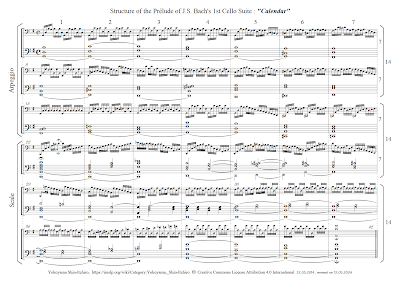2nd Suite in D minor BWV 1008
Courante
Bar 27, 3rd beat, 3rd note, all the 4 manuscripts shows g, not f as later printed editions.
Menuet 1
Bar 7, it is very curious the difference between Kellner and Anna Magdalena Bach (AMB).
AMB:
This difference and others (such as Gigue's "half-bar" of 1st suite) lead us to the conclusion that Kellner and AMB copied from different autographs of Bach. Probably, Kellner copied from Bach's composing score and AMB from Bach's clean copy. Therefore we must think the differences between Kellner and AMB not only as problems of mistake but also as results of revision of Bach himself.















